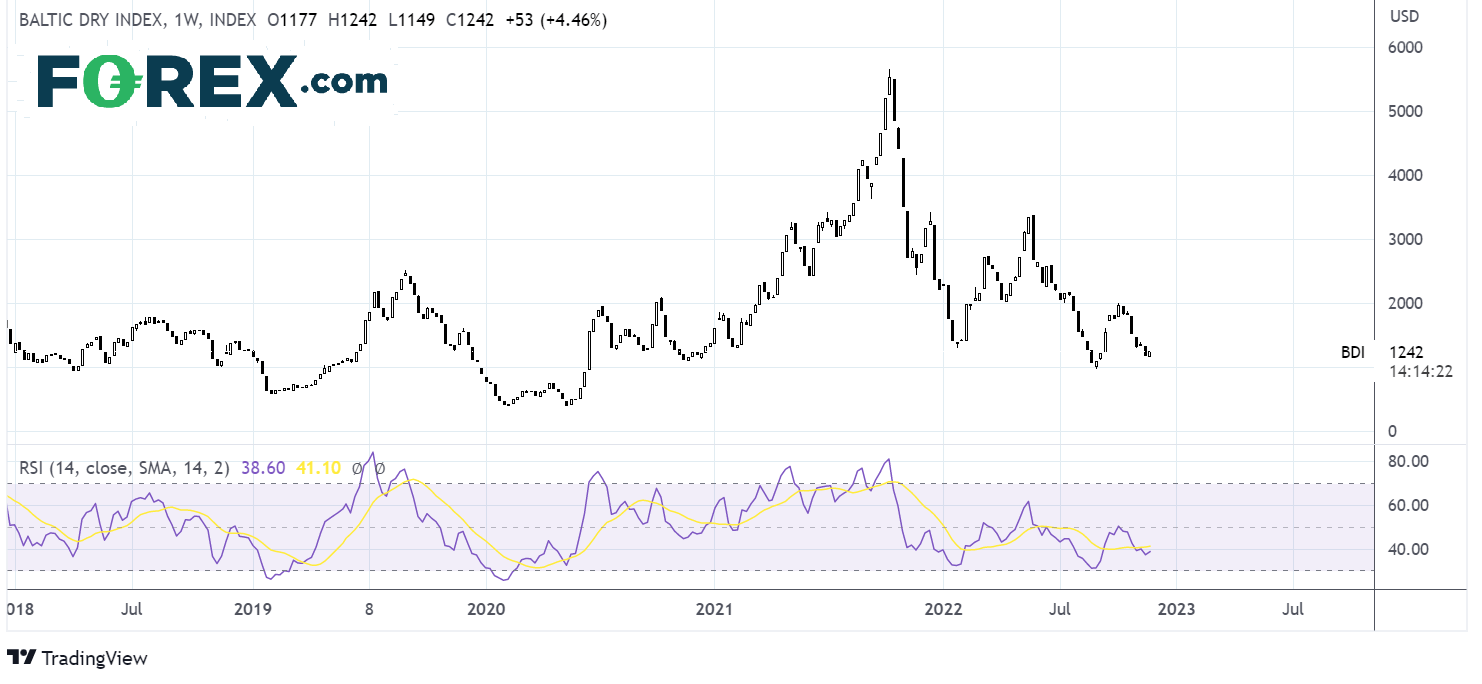
Many countries across the globe are experiencing multi-decade-high levels of inflation while growth is slowing. Central banks have been raising interest rates at a steep clip, and a global economic slowdown is underway. Many economies will struggle to avoid a recession.
While inflation data shows that inflation could have peaked in the US, prices continue to rise in Europe and the UK. While tentative signs are appearing that inflation has peaked in these regions, the CPI print has yet to show it.
The Baltic Dry Index could provide clues as to whether peak inflation has passed, whether inflation should start falling, and when it might start to pick up again.
What is the Baltic Dry Index?
The Baltic Dry Index measures the cost to ship raw materials across more than 20 routes around the globe. These include materials such as iron ore, steel, cement, and coal, to name a few, materials which are key for manufacturing and infrastructure projects.
As global demand for these materials rises, so does the demand for them to be shipped, and the Baltic Dry Index rises.
The reverse is also true. As demand falls, shipping demand falls, and the BDI falls.
Why watch the BDI?
The fact that the BDI focuses on raw materials such as iron ore, steel, cement, and coal tells us about the demand for these commodities. Demand for these commodities rises when the economy is expanding.
Demand for these commodities falls when there is excess inventory, projects are slowing, and the global economy is slowing.
The BDI is considered a lead indicator for economic activity as the changes in the index reflect changes in supply and demand for materials and commodities used in manufacturing and infrastructure projects.
This is useful for trades to know because, broadly speaking, when the global economy is slowing, stock prices often fall, along with commodity prices and commodity currencies.
BDI and inflation
The BDI along with shipping freight costs in general are important for forecasting inflation because economic growth if often inflationary and freight shipping costs are often passed through to the consumer. While a steep rise in shipping costs fuels inflation, a steep decline should dampen inflation.
According to the OECD, a 50% rise in shipping rates lifts annual PCE expenditure and consumer price inflation by 25 basis points. Other studies have pointed to a 15% change in shipping costs impacting inflation by around 10 basis points.
So what is the BDI telling us now?

The index has been falling, showing that global freight rates have been under pressure over the last two months and trade towards the lowest level of 2022. Typically, sharp falls in the index point to a recession.
When relating this to inflation, the fall in the BDI could show that inflation is set to cool. In recent earnings calls, companies mentioned freight costs less frequently than a year ago, which again is a good sign for easing inflation and could calm the Federal Reserve. Perhaps this fall in the BDI supports the view that the Fed is set to slow the pace of hikes.
On the other hand, a rise in the BDI index is often a lead-out of a recession. An increase in the index could also suggest that inflation may pick up again.
